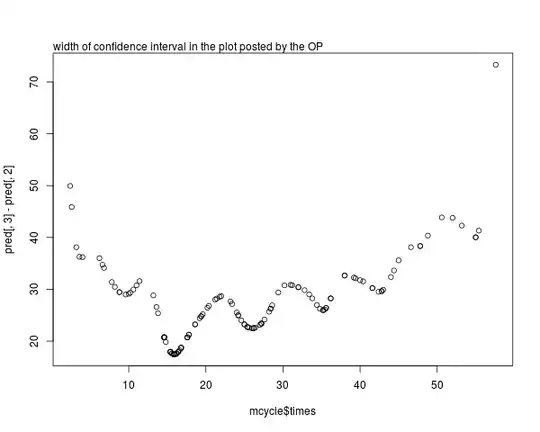In the picture below, why is u the direction of greatest variance? Aren't the data points further away from v than from u? Variance is the sum over the squared distances of each data point from the mean, right?
It would just seem to me that if I measured and summed the distances of the data points to v, it would be greater than the sum of the distances of each data point to u.
